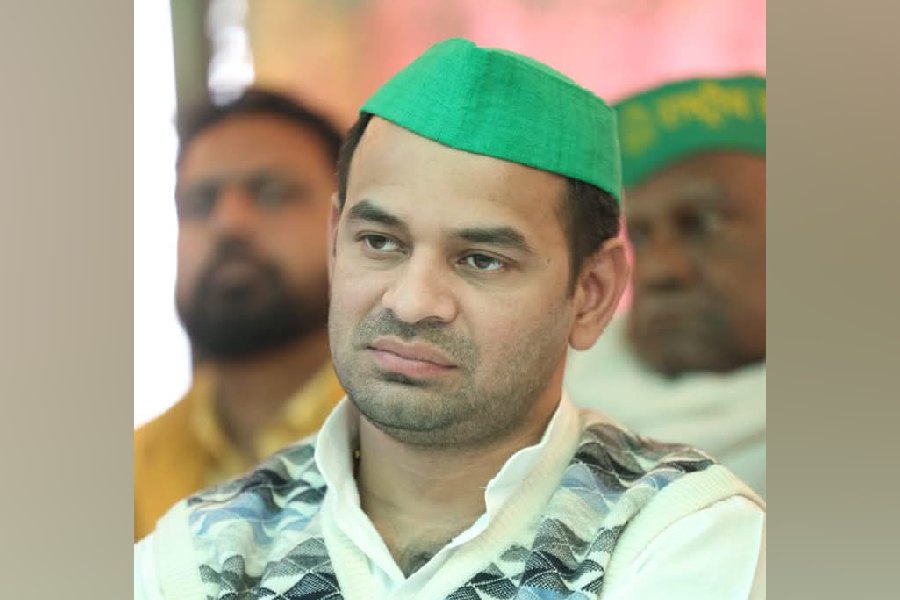|
|
| Reverse swing |
At the end of a week’s travel in South Africa, I found myself in Durban, watching the Twenty20 match between the Indian and South African teams. This was the second T20 match that I had watched in a stadium; the first one had been a match between the Delhi Daredevils and the Rajasthan Royals at the Feroz Shah Kotla ground in Delhi during the inaugural year of the Indian Premier League. That first experience had gone a long way in turning me against the abbreviated format: the weird and scary conjunction of caged cheerleaders and a baying crowd, the inaugural antics of Akshay Kumar, the fireworks, the crowds bussed into the stadium, the repetitive bursts of filmi music, all conspired to overwhelm the cricket.
But no cricket fan wants to turn into a middle-aged curmudgeon, forever denouncing the new. A contemporary of mine, who had been a first-class cricketer and who currently helps run an IPL franchisee, explained to me that the T20 format was helping win cricket a new audience and thus a new lease of life. He also pointed out that Feroz Shah Kotla was such a dreadful cricketing venue that it was unfair to judge the T20 format on the strength of that single match. So, sitting in the wonderful Moses Mabhida Stadium (built for the football World Cup last year), watching a match between two national teams in an air-conditioned hospitality suite, drinking Castle lager paid for by someone else, I tried to surrender myself to the T20 experience.
There were 50,000 spectators packed into the stands, the largest turnout for cricket ever seen in South Africa. The match had been billed as more than a cricketing contest: it was meant to be both a farewell to South Africa’s first great black cricketer, Makhaya Ntini, and a commemoration of 150 years of Indian settlement in South Africa. The president of the republic, Jacob Zuma, was one of the spectators and several distinguished South Africans of Indian origin were due to be recognized after the match for their services to the game and to South Africa. Finally, the evening was scheduled to end with a show put on by stars from Bombay’s Hindi film industry like Anil Kapoor, who doubles as a brand ambassador for South Africa, Shahrukh Khan, Priyanka Chopra and Malaika Arora.
The cricket was forgettable. It didn’t help the cause of the format that Suresh Raina got 41, the second-highest score after Rohit Sharma’s 53. Raina had just been dropped from the Test team after the first Test of the South African tour because his embarrassing inability to play fast, short-pitched bowling had been cruelly exposed. Watching him star in India’s innings was a textbook demonstration of how the T20 format defangs fast bowlers and rewards second-rate batsmen. But, I reminded myself, perhaps it was wrong to use Test cricket as a yardstick; perhaps T20 needed a different skill-set.
And briefly, the match did come alive as a cricketing contest when South Africa’s Van Wyk and de Villiers put on more than 50 runs in quick time, and seemed to put their team in a position to overhaul India’s 168 run total. In the end, India won comfortably, but as the evening wore on, it became increasingly clear that the match and its result were of no consequence because the point of the evening was the Bollywood show that followed the cricket.
There was a perfunctory post-match ceremony in which distinguished members of South Africa’s Indian community were formally honoured, but no one in the stadium really noticed. In the President’s Box, Jacob Zuma was relegated to a non-speaking role as the real stars of the evening — Anil Kapoor, Shahrukh Khan, Priyanka Chopra and Malaika Arora — blew kisses at their milling fans as security men with shields tried to keep these star-struck hordes from the objects of their adoration.
Anil Kapoor was introduced as the Indian star best known to international audiences. He got the show going by rushing out on a temporary stage and speaking in mystical terms of the bond between India and South Africa. The theatrical insincerity of it was so crass that it was briefly a relief when he handed over to Shahrukh Khan. But the worst was yet to come. Shahrukh took it upon himself to lead select South African cricketers through their showbiz paces. So A.B. de Villiers and J.P. Duminy spoke Hindi and sang and suddenly the stadium became a giant showcase for the mannered narcissism of King Khan. The cricketers who had contested the match, who had been billed as the evening’s protagonists, became extras.
The IPL’s apologists tell us that the Bombay film industry’s participation in the IPL sprinkles stardust on the cricket and makes it more glamorous, more popular. They argue that only po-faced purists can object to cricket using star power to extend its reach. Rhetorically, this is a good argument because it’s obvious that Shahrukh Khan’s and Shilpa Shetty’s association with the IPL brings the tournament more column inches in newspapers, more television time.
But the Durban match demonstrated that the reverse is actually true. Cricket isn’t using Hindi cinema to extend its brand; Hindi cinema is using cricket to consolidate its grip on popular culture. Moses Mabhida Stadium, Durban, was, in this context, simply India Offshore, a place where the diaspora lived and could be made to congregate in large numbers. Jacob Zuma, Makhaya Ntini, the cricketers in general, were, depending on the favoured metaphor, either props for the main show or appetizers for the main course. The match itself was in the nature of an opening act, a preliminary to the real business of the evening.
T20 cricket’s biggest tournament, the IPL, is a giant reality show whose stars aren’t the contestants in the middle but the film-stars in the owners’ boxes. Just as the principal character in Kaun Banega Crorepati was first Amitabh Bachchan and then Shahrukh Khan, not the actual participants, so too in T20 matches, the contest is an occasion for staging celebrity. Durban helped me understand this because the sequence of events so completely ignored the match’s stated commemorative aims — the celebration of Indian settlement and Ntini’s farewell to international cricket — that the real point of the event became apparent.
I left before Malaika Arora turned up to strut her stuff on stage but I had seen enough by that time to know that in T20’s brave new world, cricket isn’t a contest, it’s an item number. And the cricketers are the go-go girls.











